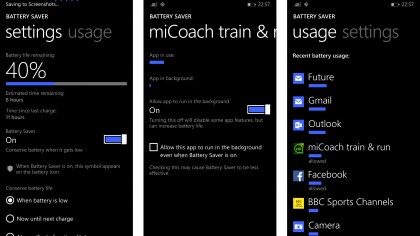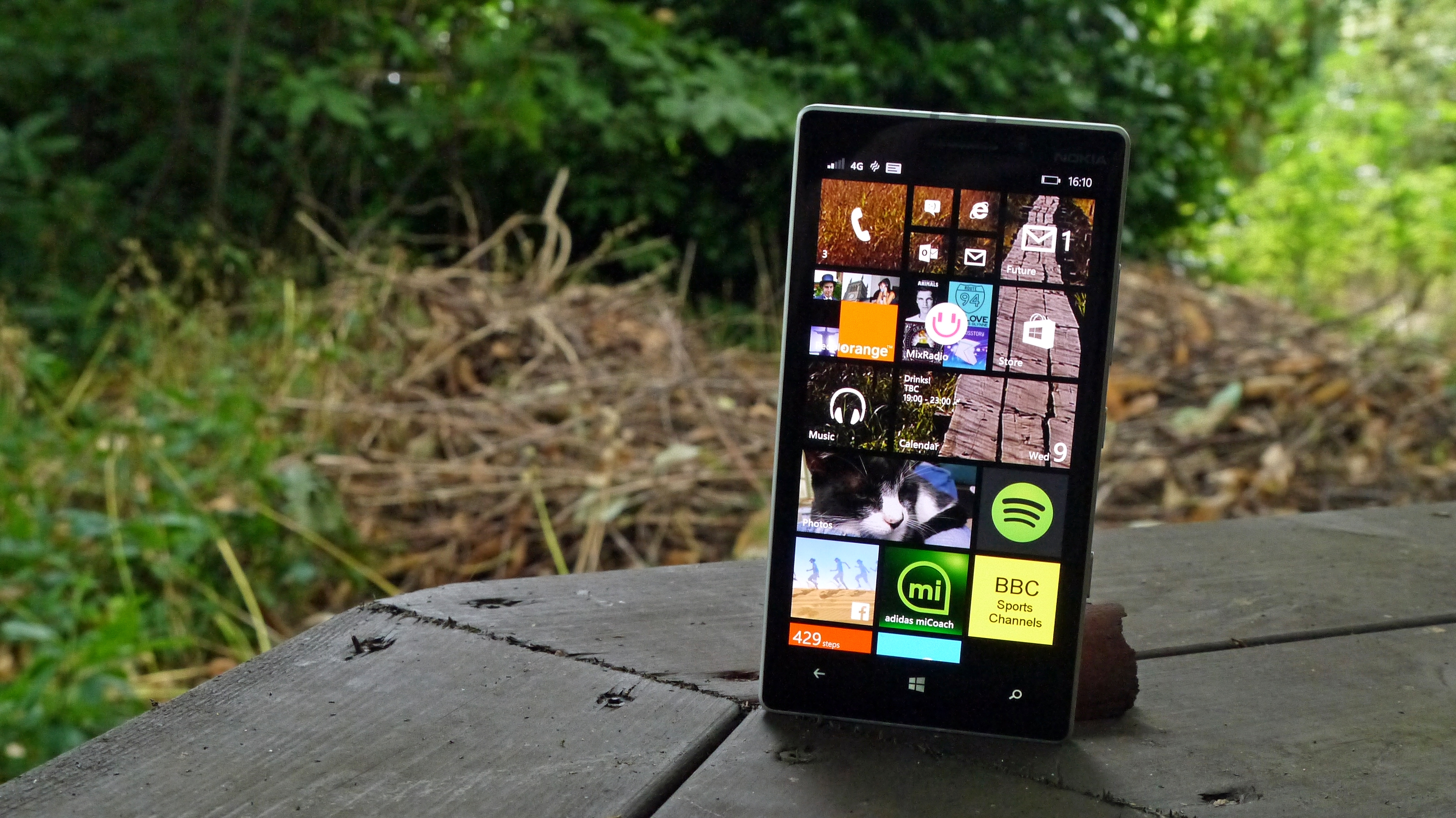Why you can trust TechRadar
As we all know, battery life is pretty important for any user… in fact, I'd consider it one of the top reasons to recommend a handset to a prospective user.
Windows Phone is traditionally one of the better operating systems when it comes to battery life, thanks to the way it's constructed to not allow too many things to interfere with one another, which can cause battery drain.
As such most Lumia phones have been stuck with a single or dual core CPU, which is really all that's needed to run Microsoft's efficient OS.
However, keen to compete on the spec sheet as well, Nokia's Lumia 930 is up to a quad-core 2.2GHz Snapdragon 800 processor. This isn't completely redundant, as it allows the phone to do things like record more efficiently in surround sound as well as process video and pictures at a higher speed.

Given Nokia's love of all things camera, this makes sense – and it also has the added bonus of improving efficiency.
This is going to be needed, as despite having a market-matching 5-inch Full HD screen, the Lumia 930 is somewhat lacking in the power stakes with a 2420mAh, from a purely spec point of view.
Nokia would argue that the increased efficiency of having one OS and hardware package all together (it is now officially run by Microsoft now, after all) allows for a smaller battery while still maintaining the same output.
To a degree, that's true. It's just a shame that Nokia's using last year's hardware for the engine – most phones today are running the Snapdragon 801 processor, which is a massive step forward in battery life and has even managed to make phones like the HTC One M8 last for well over a day.
The good news here is that the Lumia 930 will generally do the same, lasting a good 24 hours before needing to be charged. The phone needed a few days to bed in (the first tests were marred by awful battery life) but after that I regularly went to bed with 40% charge left.
However, there may be a slightly disappointing reason for this: with the limited app selection, combined with a more clunky and less useable browser, I found my level of 'smartphone fiddle' was somewhat diminished.
Things like Mix Radio not working as it should meant I streamed or listened to music less on this device, and there's no doubt that streaming using that service munches down on the battery.

Video playback is only OK on the phone too: in the test, the Lumia 930 managed to lose 24% over a 90 minute looped HD video on high brightness. Compare that to the iPhone 5S (16%) or the Sony Xperia Z2 (20%) and it's not favourable.
It's also worse than the Lumia 1520, which had the same sized screen to power, which managed to only wear down 16% of its charge – albeit drawing juice from a much bigger battery.
So it's a mixed bag when it comes to battery life for the Lumia 930, and it's one that makes me question whether it's down to the screen not being as optimised for the phone (which feels unlikely with the ClearBlack technology working) or if the OS itself, combined with a few apps, just isn't as power-efficient as it should be.
Either way, this problem could have been solved with a bigger battery, and given the chunkier proportions of the Lumia 930 it should probably have had a larger power unit stuffed in there anyway.
Let's not forget a couple of awesome bits here though: the fact wireless charging is built in, and the Battery Saver mode.
The former is a little odd, insofar that Nokia has dabbled with this on previous models before making it an optional extra. I'm overjoyed it's built in here, as it's the sort of thing that means wireless charging will start to proliferate.
On top of that there's actually a wireless charger in the box too, and while it takes a little longer to charge compared to plugging it into the wall, there's no greater joy in the bedroom than turning off the light and plopping the phone down and have it charge up, without cursing and scrabbling for a charger.
Battery saver is a decent mode for a couple of reasons: one, it will let you know how long is left based on current usage, and when you turn the service on it genuinely slows power drain down a decent amount.
It's being a little left behind by the rest of the competition coming up with ultrahyperextreme power saving modes, but if you're someone who hammers the phone some days more than others, this is a welcome tool.

Gareth has been part of the consumer technology world in a career spanning three decades. He started life as a staff writer on the fledgling TechRadar, and has grew with the site (primarily as phones, tablets and wearables editor) until becoming Global Editor in Chief in 2018. Gareth has written over 4,000 articles for TechRadar, has contributed expert insight to a number of other publications, chaired panels on zeitgeist technologies, presented at the Gadget Show Live as well as representing the brand on TV and radio for multiple channels including Sky, BBC, ITV and Al-Jazeera. Passionate about fitness, he can bore anyone rigid about stress management, sleep tracking, heart rate variance as well as bemoaning something about the latest iPhone, Galaxy or OLED TV.
